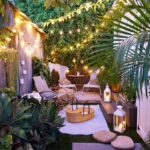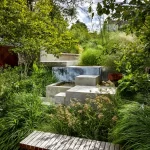Having a small garden may seem like a limitation, but with some creativity and planning, it can actually be a blessing in disguise. Small gardens have the advantage of being more manageable and easier to maintain than larger ones. With the right design strategies, you can make the most of your limited space and create a beautiful and functional outdoor oasis.
One of the keys to maximizing a small garden is to carefully consider the layout and placement of plants and features. Utilizing vertical space by adding trellises, hanging baskets, or wall planters can help you make the most of limited square footage. Creating designated zones for different purposes, such as dining, lounging, or gardening, can help define the space and make it feel more organized and intentional.
When selecting plants for a small garden, it’s important to choose varieties that won’t overwhelm the space or require excessive maintenance. Compact or dwarf varieties of popular plants can be a great option for adding color and texture without taking up too much room. Additionally, selecting plants that are well-suited to your local climate and soil conditions will ensure that they thrive and look their best in your garden.
Incorporating elements such as seating, lighting, and water features can help enhance the ambiance of a small garden and make it a more inviting and enjoyable space to spend time in. Adding a small seating area, such as a bistro set or a bench, can provide a cozy spot to relax and enjoy the beauty of your garden. Installing solar-powered lights or string lights can help create a magical atmosphere in the evenings, while a small water feature, such as a fountain or birdbath, can add a sense of tranquility and serenity.
Another important consideration when designing a small garden is to make the most of natural features and microclimates. Observing how sunlight, wind, and moisture levels vary in different areas of your garden can help you determine the best locations for plants and features. Utilizing raised beds, containers, or window boxes can also help you take advantage of strategic spots and create a lush and layered garden that maximizes space and visual interest.
Ultimately, the key to creating a successful small garden is to approach it with creativity, resourcefulness, and a willingness to experiment. By carefully planning the layout, selecting appropriate plants and features, and making the most of natural conditions, you can transform a compact outdoor space into a vibrant and inviting garden that reflects your personal style and enhances your quality of life.
















